#america entered the war in 1965
Text
It did not register to me that it took Erik literally a year to get imprisoned into plastic hell. LMAO. A YEAR. Homeboy is actually not very good at the whole terrorist thing.
#Between Rage and Serenity#xmen#cherik#xmen movieverse#xmen dofp#xmen first class#xmen apocalypse#a year with raven and the other mutants#a year in which he learns of charles injury#like presumably they met in between#and then erik went to save the president#by himself#only to get caught#and THEN I imagine everyone sean - emma - azazel - janos - angel died?#How did he know about it tho???#THat means the assholes in prison taunted him#or he somehow learned it somewhere??? I don't know how#I assume sean died after getting enlisted#america entered the war in 1965#so sean only died after that#kurt is probably 18 or around there in apocalypse?#so by 1964 raven was in a relationship with azazel or at least they had sex#in which she became pregnant#like DAMN -#thats a lot#I need to write a headcanon history for these movies
65 notes
·
View notes
Text
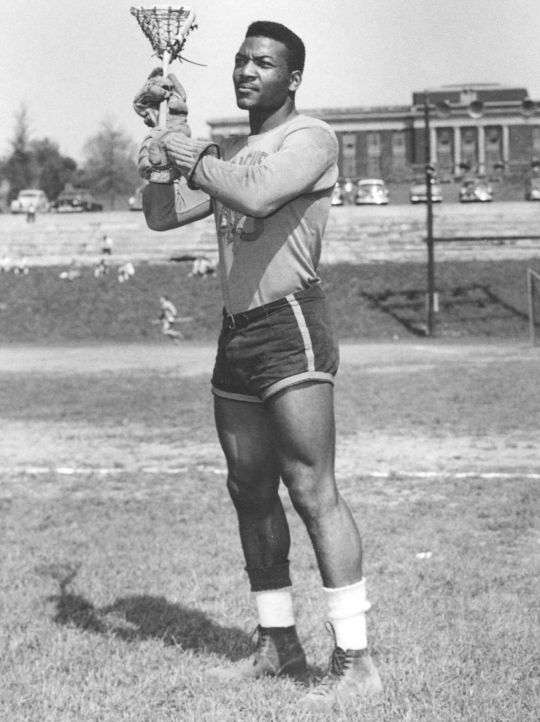

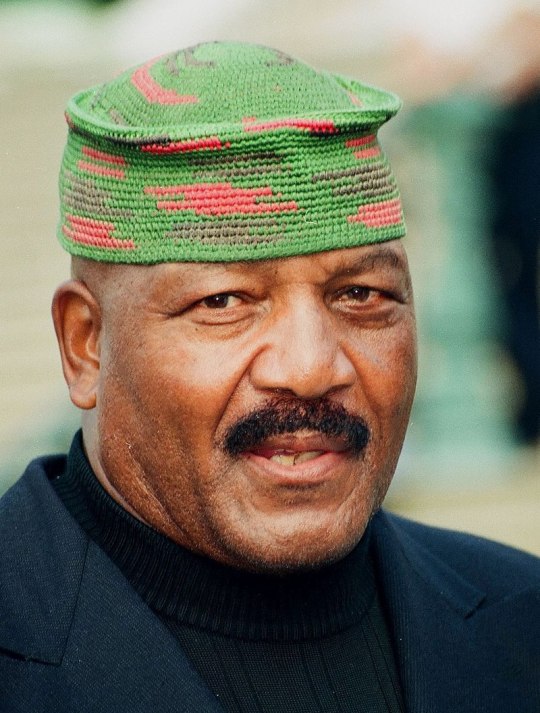
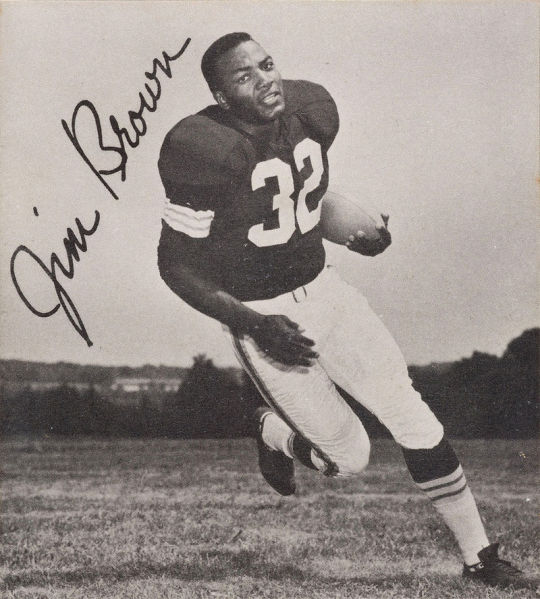
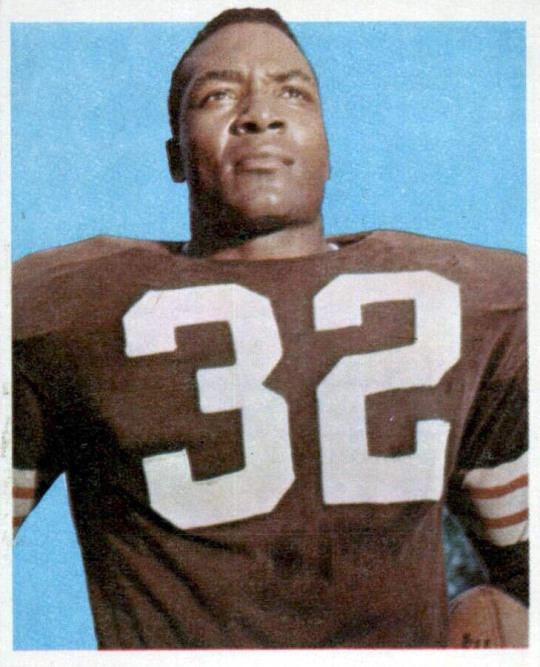


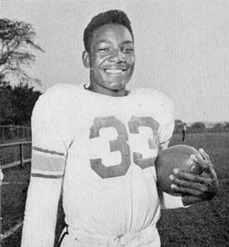
Arrivals & Departures 17 February 1936 – 18 May 2023 James Nathaniel Brown
James Nathaniel Brown was an American football fullback, civil rights activist, and actor. He played for the Cleveland Browns of the National Football League (NFL) from 1957 through 1965. Considered to be one of the greatest running backs of all time, as well as one of the greatest players in NFL history, Brown was a Pro Bowl invitee every season he was in the league, was recognized as the AP NFL Most Valuable Player three times, and won an NFL championship with the Browns in 1964. He led the league in rushing yards in eight out of his nine seasons, and by the time he retired, he held most major rushing records. In 2002, he was named by The Sporting News as the greatest professional football player ever.
Brown earned unanimous All-America honors playing college football at Syracuse University, where he was an all-around player for the Syracuse Orangemen football team. The team later retired his number 44 jersey, and he was inducted into the College Football Hall of Fame in 1995. He is also widely considered one of the greatest lacrosse players of all time, and the Premier Lacrosse League MVP Award is named in his honor. Brown also excelled in basketball and track and field.
In his professional career, Brown carried the ball 2,359 times for 12,312 rushing yards and 106 touchdowns, which were all records when he retired. He averaged 104.3 rushing yards per game, and is the only player in NFL history to average over 100 rushing yards per game for his career. Brown was enshrined in the Pro Football Hall of Fame in 1971. He was named to the NFL's 50th, 75th, and 100th Anniversary All-Time Teams, comprising the best players in NFL history. Brown was honored at the 2020 College Football Playoff National Championship as the greatest college football player of all time. His number 32 jersey is retired by the Browns.
Shortly before the end of his football career, Brown became an actor. He retired at the peak of his football career to pursue an acting career. He obtained 53 acting credits and several leading roles throughout the 1970s. He has been described as Hollywood's first black action hero and his role in the 1969 film 100 Rifles made cinematic history for featuring interracial love scenes.
Brown was one of the few athletes, and among the most prominent African Americans, to speak out on racial issues as the civil rights movement was growing in the 1950s. He participated in the Cleveland Summit after Muhammad Ali faced imprisonment for refusing to enter the draft for the Vietnam War, and he founded the Black Economic Union to help promote economic opportunities for minority-owned businesses. Brown later launched a foundation focused on diverting at-risk youth from violence through teaching them life skills, through which he facilitated the Watts truce between rival street gangs in Los Angeles.
4 notes
·
View notes
Text
Eqbal Ahmad
(theeqbalahmadproject.com)
He brought wisdom and integrity to the cause of oppressed peoples
By Edward W Said Thu 13 May 1999
Eqbal Ahmad, perhaps the shrewdest and most original anti-imperialist analyst of Asia and Africa, has died, aged 66, in Islamabad following an operation for colon cancer. A man of enormous charisma and incorruptible ideals, he was a prodigious talker and lecturer.
He had an almost instinctive attraction to movements of the oppressed and the persecuted, whether in Europe, America, Bosnia, Chechnya, South Lebanon, Vietnam, Iraq or the Indian sub-continent. He had a formidable knowledge of history, always measuring the promise of religion and nationalism against their depredations and abuse as their proponents descended into fundamentalism, chauvinism and provincialism.
Ahmad was a fierce, often angry, combatant against what he perceived as human cruelty and perversity. During his last years, he dedicated himself - quixotically it would sometimes appear - to the creation of an alternative university in Pakistan, named Khalduniyah after the great Arab polymath and historian whose comprehensive view of the human adventure Ahmad sought to embody in a curriculum solidly based in the modern humanities, social and natural sciences.
Born in the Indian state of Bihar, he and his siblings left for Pakistan in 1948; before that, his father was murdered in bed over a land dispute, as the boy lay next to him, a traumatic event Eqbal would cite when he attacked material acquisitiveness.
In Lahore, he attended Foreman Christian College, became briefly an army officer, then went to the United States in the mid-1950s as a Rotary fellow in American history at Occidental College, California. He entered Princeton in 1958 with a double major in political science and Middle Eastern studies. He got his PhD in 1965 and, during his Princeton years, went to Algeria, joined the FLN, was arrested in France and established a cultural centre in Tunis.
During the 1960s, he taught at Cornell and Chicago, and was among the first fellows of the anti-war Washington Institute of Policy Studies (IPS). In 1969 he married Julie Diamond, a teacher and writer from New York, and between 1973 and 1975 he established and headed the IPS's offshoot in Amsterdam, the Transnational Institute.
Ahmad was an early and prominent opponent of the Vietnam war, and in 1970 was tried with the Berrigan brothers on a trumped-up charge of conspiracy to kidnap Henry Kissinger - on which he and his alleged co-conspirators were acquitted. In addition to his outspoken support of unpopular causes (especially Palestinian rights), Ahmad's uncompromising politics kept him an untenured professor at various universities until 1982, when Hampshire College, Massachusetts, made him a professor. He taught there until he became emeritus professor in 1998, dividing his time between New England and Pakistan.
During these years he travelled all over the world. Arabs, for example, learned more from him about the failures of Arab nationalism than from anyone else. In 1980, in Beirut, he was the first to predict the exact outlines of the 1982 Israeli invasion; in a memo to Yasir Arafat and Abu Jihad he also sadly forecast the quick defeat of PLO forces in South Lebanon. He was a relentless opponent of militarism, bureaucracy, ideological rigidity and what he called 'the pathology of power'. He was consulted by journalists and international civil servants about abstruse currents in contemporary Afghanistan, Algeria, Iran, India, Pakistan, Angola, Cuba, Sri Lanka and he had an encyclopaedic knowledge of the US.
No one who saw him sitting bare-foot and cross-legged on a living-room floor, conversing genially until the early hours, with a glass in his hand, will ever forget the sight or the sound of his voice as he announced 'four major points' - but never got past two or three. He loved literature, especially poetry, and the sensitive and precise use of language, whether it was Urdu, English, French, Arabic or Farsi.
Ahmad was that rare thing, an intellectual unintimidated by power or authority, a companion in arms to such diverse figures as Noam Chomsky, Howard Zinn, Tariq Ali, Ibrahim Abu-Lughod, Richard Falk, Fred Jameson, Alexander Cockburn and Daniel Berrigan.
Immaculate in dress and expression, faultlessly kind, an unpretentious connoisseur of food and wine, he saw himself as a man of the 18th century, modern because of enlightenment and breadth of outlook, not because of technological or quasi-scientific 'progress'. Somehow he managed to preserve his native Muslim tradition without succumbing either to the frozen exclusivism or to the jealousy that has often gone with it. Humanity and secularism had no finer champion. He is survived by Julie, and their daughter Dohra, a graduate student at Columbia.
Eqbal Ahmad, political scientist and peace activist, born 1933; died May 11, 1999
#Edward W Said#Eqbal Ahmad#david tennant#baftas#bafta 2024#eurovision#c4news#bethlehem#ethnic cleansing#doctor who
1 note
·
View note
Video
youtube
Chapter 3: Two pastors react to Tim Alberta's book "The Kingdom, the Pow..
COMMENTARY:
The politics connected to The Total Depravity Gospel of the Pro-Life Fascism of Evangelicals begins with the Army-McCarthy Hearings and William F Buckley's publication in 1960 of the Sharon Statement, which is a white supremacist agenda of the John Birch Society to elect a clone of Joe McCarthy and overthrow the federal government and the Nazification of America that runs, straight as a laser, to January 6,
My dad was working for Matthew Ridgway during the McCarthy Hearings, Before Roy Cohn began his assault on the Army to get special treatment for his boy friend, the Army backed his focus of Soviet and domestic Communist infiltration of the federal government, but the lesson they learned, the colonels and majors engaged in running the Army, was that the Commies were a nuisance but the true existential threat to America was Domestic Extremism and White Nationalism. The Army bands began to play the 1812 Overture at Post 4th of July celebrations with cannons and fireworks. The Overture is appropriately noisy, but the Army had two other subversive messages.
One was a tribute to the Red Army for their incomprehensible sacrifice for the de-Nazification of Germany celebrated at the Elbe Bridge. If you watch The 4th of July on the Mall on PBS, that's the US Army celebrating the Elbe Bridge in gratification to the Red Army for entering Manchuria as part of the invasion of Japan, My dad was part of the Order of Battle for the invasion of Japan and he said all the GIs in the Pacific were grateful for the Soviet invasion,
The other message needs to be understood in the context of the tribute to the Red Army by the US Army on the 4th of July is both a prophecy and an insult, the prophecy is "Beware the John Birch Society: and the insult is "Fuck YOU,, Joe McCarthy and that January 6 horse you rode in on,"
That's the political side, I voted for Nixon before i went to Vietnam and I voted for him when I got bac. Sfter 1963, I could have had a job in the Nixon White House as a research assistant for Ray Price, but i was on another trajectory and I didn't want to work in the same building as Pat Buchanan and the Plumbers, a collection of white supremacist thugs who had hijacked Barry Goldwater's' Conservative brand as campaign worker and Conservative became the brand of the John Birch Society, They are now MAGA Conservatives who have the January 6 majority in the House which is looking for an excuse to cause America to default on it's debt in hopes of a social collapse like in Ayn Rand's "Atlas Shrigges, which was the Turner Diaries of the Boomer generation of Por-War Country Club Republican campus Brown Shirts, the Young Americans for Freedom, I was an ROTC Cadet from 1965 - 1969 and i was stuck between Liberal anti-war campus radicals and it is a generational food fight that continues until this moment,
This is the purely political side of the MAGA Conservative equation, The presenting existential threat in the looming budget dead line and Speaker of the House who is the David Koresh of the January 6 majority,
It would serve your purposes to review the climax of Atlas Shrugged, Steve Bannon is the John Balt of the January 6 Committee to Install Trump and the connection to the lunatic fringe of the Born Again Pro-Life Rapture Coalition is far more insidious than I can fully convey in this essay,
.
0 notes
Text
Events 1.1 (between 1940-1990)
1942 – The Declaration by United Nations is signed by twenty-six nations.
1945 – World War II: The German Luftwaffe launches Operation Bodenplatte, a massive, but failed, attempt to knock out Allied air power in northern Europe in a single blow.
1947 – Cold War: The American and British occupation zones in Allied-occupied Germany, after World War II, merge to form the Bizone, which later (with the French zone) became part of West Germany.
1947 – The Canadian Citizenship Act 1946 comes into effect, converting British subjects into Canadian citizens.[64] Prime Minister William Lyon Mackenzie King becomes the first Canadian citizen.
1948 – The British railway network is nationalized to form British Railways.
1949 – United Nations cease-fire takes effect in Kashmir from one minute before midnight. War between India and Pakistan stops accordingly.
1956 – Sudan achieves independence from Egypt and the United Kingdom.
1957 – George Town, Penang, is made a city by a royal charter of Queen Elizabeth II of the United Kingdom.
1957 – Lèse majesté in Thailand is strengthened to include "insult" and changed to a crime against national security, after the Thai criminal code of 1956 went into effect.: 6, 18
1958 – The European Economic Community is established.
1959 – Cuban Revolution: Fulgencio Batista, dictator of Cuba, is overthrown by Fidel Castro's forces.
1960 – Cameroon achieves independence from France and the United Kingdom.
1962 – Western Samoa achieves independence from New Zealand; its name is changed to the Independent State of Western Samoa.
1964 – The Federation of Rhodesia and Nyasaland is divided into the independent republics of Zambia and Malawi, and the British-controlled Rhodesia.
1965 – The People's Democratic Party of Afghanistan is founded in Kabul, Afghanistan.
1970 – The defined beginning of Unix time, at 00:00:00.
1971 – Cigarette advertisements are banned on American television.
1973 – Denmark, Ireland and the United Kingdom are admitted into the European Economic Community.
1976 – A bomb explodes on board Middle East Airlines Flight 438 over Qaisumah, Saudi Arabia, killing all 81 people on board.
1978 – Air India Flight 855, a Boeing 747, crashes into the Arabian Sea off the coast of Bombay, India, due to instrument failure, spatial disorientation, and pilot error, killing all 213 people on board.
1979 – the Joint Communiqué on the Establishment of Diplomatic Relations and Taiwan Relations Act enter into force. Through the Communiqué, the United States establishes normal diplomatic relations with China. Through the Act, the United States guarantees military support for Taiwan.
1981 – Greece is admitted into the European Community.
1982 – Peruvian Javier Pérez de Cuéllar becomes the first Latin American to hold the title of Secretary-General of the United Nations.
1983 – The ARPANET officially changes to using TCP/IP, the Internet Protocol, effectively creating the Internet.
1984 – The original American Telephone & Telegraph Company is divested of its 22 Bell System companies as a result of the settlement of the 1974 United States Department of Justice antitrust suit against AT&T.
1984 – Brunei becomes independent of the United Kingdom.
1985 – The first British mobile phone call is made by Michael Harrison to his father Sir Ernest Harrison, chairman of Vodafone.
1987 – The Isleta Pueblo tribe elect Verna Williamson to be their first female governor.
1988 – The Evangelical Lutheran Church in America comes into existence, creating the largest Lutheran denomination in the United States.
1989 – The Montreal Protocol comes into force, stopping the use of chemicals contributing to ozone depletion.
1990 – David Dinkins is sworn in as New York City's first black mayor.
0 notes
Text
Documentary in a shifting landscape
Grace Doyle
Salesman
America was in turmoil entering the 1960s. The threat of nuclear war still loomed large, and there was an overall loss of confidence in social institutions when compared to pre-War American society. The film industry itself was in the process of being dismantled from its then-monopolistic structure. As a result, documentary filmmaking emerged as a response, and a way for filmmakers to target these institutions more intimately. The Maysles Brothers, whose initial claim to fame came from shooting celebrities like the Beatles and Joseph Levine, shifted their attention to a group which was more grounded in reality: thus, Salesman (1969) was created.
Salesman follows the excursions of four door-to-door Bible salesmen in middle class America. The group travels from Boston to Florida as they try to sell their books to lower-income Catholics. Both the merchants and the customers are struggling to make ends meet, which results in low income for the men. Struggling most is Paul, who tries and fails multiple times at a simple sale. However, the majority of the people they interact with are housewives and the elderly, each with their own issues.
The cinema vérité style which is present in the film forces the film to be observational in its depictions of middle-class citizens across America. In my initial viewing, I imagined it would be a commentary on the church and religion as an industry, but as I came to find out, it was more of a critique of capitalism in the 1960s, and how there are no true winners when pursuing the unattainable American Dream.
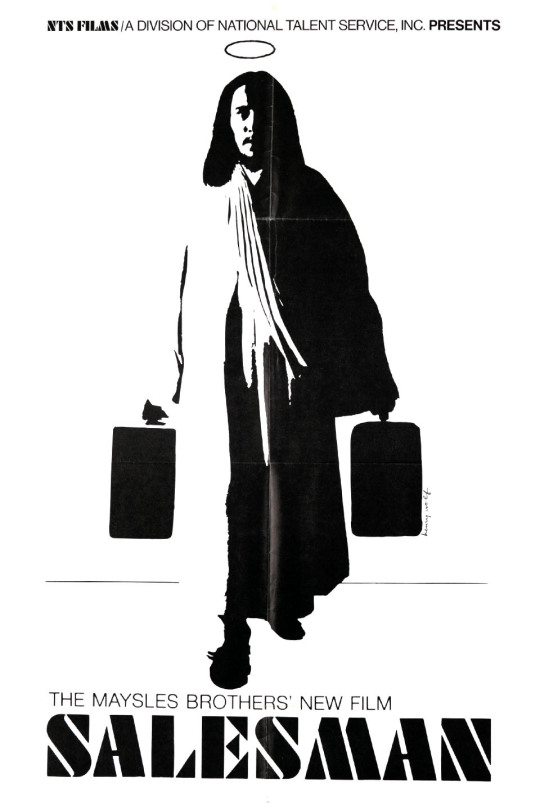
Dont Look Back
Dont Look Back (1967) follows folk singer Bob Dylan during his U.K. tour in 1965. Dylan’s iconography sometimes precedes him in modern day: either, he is held to the highest regard as a poet and a preacher, or he is mocked for his pretentious nature. This film depicts an accurate portrait of each of those sentiments. Dylan’s obvious social intelligence often conflicts with his ego, and his abrasive nature clouds his often progressive views about social issues and human nature. As described by Richard Porton, “Whether Dylan is mocking the inane questions posed to him by hack journalists, engaging in what Robert Polito terms a ‘venomous pissing contest’ with pop star Donovan, or casually paving the way for a breakup with then-girlfriend Joan Baez, he is never, even though he’s alternatively charming and nasty, anything less than a charismatic presence,” (Porton, 24).
This film, also shot in the cinema vérité style, allows viewers an unobstructed portrayal of the youth’s mindset in the mid-1960s. Dylan and Baez were the faces of the folk-revival movement, and their poetry reflected the turning of the political tides. Followers of the rising counterculture movement, like Dylan, questioned authority and were suspicious of industries like the government and the media. Dylan never wanted to be a savior; yet, voicing his political views with such integrity and determination garnered him a following. Dont Look Back is, at its core, a commentary on the politics of the entertainment industry.

Works Cited
Haleff, Maxine. “The Maysles Brothers and ‘Direct Cinema.’” Film Comment, vol. 2, no. 2, 1964, pp. 19–23. JSTOR, http://www.jstor.org/stable/43754339. Accessed 4 Dec. 2023.
Pennebaker, D. A., et al. “The View From Backstage: An Interview With D. A. Pennebaker and Chris Hegedus.” Cinéaste, vol. 41, no. 3, 2016, pp. 24–33. JSTOR, http://www.jstor.org/stable/26356423. Accessed 4 Dec. 2023.
0 notes
Text
Apollo

Doubt thou the stars are fire; Doubt that the sun doth move; Doubt truth to be a liar; But never doubt I love.
William Shakespeare, Hamlet, 1601
The matrimony between statecraft and the conquest of the cosmos birthed the space industry in a concerted effort to seize the final frontier. A triumvirate of government, academia and corporations found common cause in the geopolitics of the Cold War to mobilize minds and machines against the Soviets whose Sputnik orbited the earth by 1957. This shot across the bow of a lone satellite in the outlands of the stars rattled American exceptionalism insofar as policymakers perceived it to be an existential threat over their monopoly of the sciences. The slender orb of 83.6kg evoked paranoia due to how swift the Soviet Union transitioned into a knowledge-based economy. Any robust space industry cultivates a panoply of ancillary sectors from vast spillovers to fabricate composite metals, semiconductors, liquid fuels and other things of this ilk. Prima facie the coup was prodigious by itself but the infrastructure behind it left Washington reeling. Manifestly the communists confirmed themselves to be lightyears ahead of their counterparts in the research of science, technology, engineering and mathematics (STEM). The postwar propaganda value of boasting the know-how of rocketry to escape earth’s gravity rallied brains and brawn around the flag in a species of a Manhattan Project redux.
In the infancy of the space derby the torrent of Soviet victories intensified rivalries in the bipolar world. The canine Laika became the first mammal to voyage the ether in 1957. Luna 2 probed the Moon’s surface on the maiden trip of its kind in 1959. Luna 3 purveyed to the world its first glimpse of the far side of the Moon in 1959. Venera 1 established a record as the first interplanetary vehicle to effect a flyby of Venus in 1961. Cosmonaut Yuri Gagarin followed suit by entering the firmament as the first human in 1961. Cosmonaut Valentina Tereshkova defied gender norms as the first woman to orbit earth in 1963. Cosmonaut Alexei Leonov partook in the first spacewalk in 1965. Mars 3 captured immortality as the first manmade craft to land on the Martian planet in 1971. The string of triumphs and their rapid succession aroused awe and dread on terra firma amongst the cognoscenti in the Beltway. Such a truncated turnaround from the ravages of WWII called into question whether in fact the communist model of governance was indeed leaps and bounds ahead of free market capitalism. The gulf of a knowledge gap that differentiated the Soviet space program from the amorphous one in America left skeptics of the former agog. For a time the legion of scientists under the auspices of the politburo’s central planning seemed omniscient.
Such centralization of the bureaucracy unmolested by partisanship or a farrago of stakeholders created small skunkworks under the nomenclature of OKBs wherein discoveries were made at the cadence of a metronome. Not at all enigmatic in retrospect this quantum leap also stemmed from its piracy that was more rapacious than America’s. Whereas Washington acquired intellectual assets via Operation Paperclip the Soviet’s variant of Osoaviakhim in 1946 conscripted a whole brigade of German minds to catapult space exploration. Wernher von Braun and a cohort of his scientists from Peenemünde were spirited away to Washington whilst Moscow’s dragnet repatriated exponentially more in human capital and technology (Neufeld 2004). The poaching of knowledge midwifed the series of records monopolized by the superpower in the incipient years of the space race. The spoils of war from German heuristics wedded to indigenous capabilities proved to be a boon for the Soviets who were keen to parade the merits of communism. Indeed the Kremlin’s industrial complex revolutionized space travel for the sake of ideological warfare against its nemesis. The disparities were quite vast. America’s Project Mercury sought to put an astronaut in orbit as the Soviet’s Luna missions were already plumbing the Moon in 1959.
In the prelude to the moonshot of Apollo the saga of America’s space industry begins with the importation of V-2 rockets from the Nazi regime which whetted the enthusiasm for escaping earth’s gravity. Under Project Hermes the autopsy on these missiles saw the technology reverse engineered in an effort to breach the Karman Line of the upper atmosphere. A whole 300 boxcars of miscellaneous V-2 hardware smuggled from Germany made their way to the White Sands Proving Ground in New Mexico where 67 units were reassembled between 1946 and 1951 (Buchanan et al. 1984). Telemetry data from subsequent tests telescoped the learning curve to spur the development for Apollo’s workhorse known as the Saturn V rocket whose pedigree veritably traces back to the V-2s. At this early juncture it was the firm General Electric with which Washington rendezvoused so as to scrutinize these artifacts for their ballistics and gyrostabilized guidance systems. A constellation of scientists were contracted to harvest the secrets hidden within the entrails of the V-2s in a bid to marshal propulsion and re-entry technologies into maturity. Borne from this fact-finding mission did GE design avionics that later computed the terabytes of data for the Apollo moonshot. The firm would be the first embraced in the bosom of the space program.
Post the industrial policy of this public-private partnership the space industry sired the National Aeronautics and Space Administration (NASA) as its guardian in 1958. The institution’s formation heralded a departure from space’s militarization towards its exploration to demystify the mysteries of the cosmos. The separate track charted a course to the stars for civilian ends at variance with the Defence Advanced Research Projects Agency (DARPA) that put a premium on technology for martial use. Founded fourth months prior to NASA this other agency’s mandate was written in rebuttal to the USSR’s launch of Sputnik. Within this bifurcation the raison-d’être for each hinged on war in the case of DARPA and peace in the case of NASA. The civilian program’s prime directive as distilled in section 102 of the National Aeronautics and Space Act of 1958 empowered the institution to one end alone of making America a leader in the Olympics of science. NASA wasted no time in engineering a stepwise roadmap between the triad of Projects Mercury, Gemini and Apollo in this chronological order. Each unique phase rested along a spectrum in the mastery of technology beginning with a manned craft in space to orbital docking and finally a lunar expedition. NASA summarily evolved into a hive of innovation.
After GE’s forensics upon reconstituting the hodgepodge of V-2 rocket paraphernalia amidst Project Hermes the next private firms entrusted with reifying America’s curiosity with outer space were Chrysler and McDonnell Aircraft. Industrial policy shovelled $277m or $2.9t in real value for its pecuniary commitment towards the first phase christened Project Mercury (DiLisi et al. 2019). The industrial heritage of Chrysler hitherto as a marque of Plymouths and Dodges appears paradoxical for such high-tolerance engineering but the firm proved its poise in WWII when it mass-produced 25,000 M4 Sherman Tanks (Davis 2007). To segue into this highbrow application the company collaborated with the prodigy von Braun who was the doyen of rocket science. Chrysler would be the proverbial blacksmith for the single-stage Redstone booster whose propulsion from 78,000 pounds of thrust bore astronaut Alan Shepard into suborbital space in 1961 (Bentley 2009). It fell to McDonnell Aircraft to manufacture the spacecraft itself meant to house the life support systems for a solitary occupant in the antipodes of space. Everything from the heat-shield for re-entry to the escape system that jettisoned the capsule with a parachute should the mission be aborted in the event of a catastrophic failure was designed by the firm.
1 note
·
View note
Text
Holidays 7.30
Holidays
Asarnha Bucha Day (Thailand)
Comedy Day
Copperhead Day
Crater Day (Virginia)
Dia del Amigo (Paraguay)
Father-in-Law Day
Feast of the Throne (Morocco)
Gastroschisis Awareness Day
Healthcare Now! Medicare Day
International Day of Friendship (a.k.a. Friendship Day; UN)
Jimmy Hoffa Day
Kiss Your Car Day
Marseillaise Day
Martyr’s Day (South Sudan)
Medicare Day
National Golden Girls Day
National Norma Day
National Support Public Education Day
National Whistleblower Appreciation Day
Paperback Book Day
President’s Day (Republic of Molossia)
Share a Hug Day
Teacher Day (Latin America)
Throne Day (Morocco)
World Day Against Trafficking in Persons (UN)
World Embroidery Day
World Snorkeling Day
Food & Drink Celebrations
Loaf Day
National Cheesecake Day
National Chicken and Waffles Day
5th & Last Sunday in July
Domhnach Chrom Dubh (Grain Festival; Ireland) [Last Sunday]
Father’s Day (Dominican Republic) [Last Sunday]
International Bog Day [Last Sunday]
National Stepfamilies Day (Australia) [Last Sunday]
National Tree Day (Australia) [Last Sunday]
Navy Day (Russia) [Last Sunday]
Pile of Bones (Canadian Picnic) [Last Sunday]
Procession of Penitence/Pleasure Fair (Belgium) [Last Sunday]
Reek Sunday (Ireland) [Last Sunday]
Independence Days
Vanuatu (from UK/France, 1980)
Feast Days
Abdon (Christian; Saint) [barrel-makers, coopers] *
Ashura, Day 2 (Islamic) [a.k.a. ...
Ashoora (Parts of India)
Ashura (Bahrain, Bangladesh, Pakistan)
Muharram (Parts of India)
Muharrum (Bangladesh)
Yaum-e-Ashur (Pakistan)
Birthday of Isis (Ancient Egypt)
Demento Day (Church of the SubGenius; Saint)
Festival of Fortune Huiusque Diei (Fortune of the Present Day; Ancient Rome)
Froissart (Positivist; Saint)
Giorgio Vasari (Artology)
Hatebrand (Christian; Saint)
Henry Moore (Artology)
Jullitta (Christian; Martyr)
Kronia (Festival of Kronos, God of the Harvest; Ancient Greece)
Maxima, Donatilla, and Secunda (Christian; Saint)
Parmesan Day (Pastafarian)
Peter Chrysologus (Christian; Saint)
Robert Barnes (Lutheran)
Rufinus of Assisi (Christian; Saint)
Sir Steve, of the Kingdom of Gorf (Muppetism)
Tatwine (Christian; Saint)
Ursus of Auxerre (Christian; Saint)
Sennen (Christian; Martyr)
Solanus Casey (Christian; Saint)
Tyr’s Day (Pagan)
Lucky & Unlucky Days
Prime Number Day: 211 [47 of 72]
Tomobiki (友引 Japan) [Good luck all day, except at noon.]
Premieres
Alice Picks the Champ (Disney Cartoon; 1925)
Batman: The Movie (1966)
Cats & Dogs: The Revenge of Kitty Galore (Film; 2010)
Coyote Falls (WB LT Cartoon; 2010)
Dinner for Schmucks (Film; 2010)
Enter Sandman, by Metallica (Song; 1991)
Flesh Gordon (Adult Film; 1974)
Flight of the Navigator (Film; 1986)
Flowers and Trees (Disney Cartoon; 1932)
The Green Knight (Film; 2021)
Harold & Kumar Go to White Castle (Film; 2004)
Inspector Lews (UK TV Series; 2006)
Is This It, by The Strokes (Album; 2001)
Jungle Cruise (Film; 2021)
Justice League: The Flashpoint Paradox (WB Film; 2013)
The Lifeguard (Film; 2013)
Man Out of Time, by Elvis Costello (Song; 1982)
Mister Roberts (Film; 1955)
Night Shift (Film; 1982)
An Officer and a Gentlemen (Film; 1982)
Out of Our Heads, by The Rolling Stones (Album; 1965)
Out of the Frying Pan Into the Firing Line (Disney Cartoon; 1942)
Ready, Woolen and Able (WB MM Cartoon; 1960)
Rising Sun (Film; 1993)
Robin Hood: Men in Tights (Film; 1993)
Runaway Bride (Film; 1999)
So I Married an Axe Murderer (Film; 1993)
Sublime, by Sublime (Album; 1996)
The Trial of Donald Duck (Disney Cartoon; 1948)
Victory Vehicles (Disney Cartoon; 1943)
War is a Racket, by Smedley D. Butler (Book; 1935)
Wool, by Hugh Howey (Novel; 2011)
Today’s Name Days
Inga, Ingeborg, Petrus (Austria)
Anđa, Julita, Maksima, Petar, Rufin (Croatia)
Bořivoj (Czech Republic)
Abdon (Denmark)
Kerman, Kermo, Roland (Estonia)
Asta (Finland)
Juliette (France)
Inga, Ingeborg, Petrus (Germany)
Andronikos, Silouanos (Greece)
Judit, Xénia (Hungary)
Donatella, Pietro (Italy)
Madara, Renārs, Rosalinde, Valters (Latvia)
Abdonas, Donatilė, Nortautas, Radvilė (Lithuania)
Aud, Audhild, Aurora (Norway)
Abdon, Julia, Julita, Ludmiła, Maryna, Ubysław (Poland)
Margarita, Marina (Russia)
Libuša (Slovakia)
Pedro (Spain)
Algot (Sweden)
Syla, Sylvan (Ukraine)
Casey, Enrica, Enrique, Etta, Everard, Everett. Hank, Hendrick, Henrietta, Henry, Kacey, Kacie, Kasey, Reece, Reese (USA)
Today is Also…
Day of Year: Day 211 of 2024; 154 days remaining in the year
ISO: Day 7 of week 30 of 2023
Celtic Tree Calendar: Tinne (Holly) [Day 20 of 28]
Chinese: Month 6 (Ji-Wei), Day 13 (Ji-Chou)
Chinese Year of the: Rabbit 4721 (until February 10, 2024)
Hebrew: 12 Av 5783
Islamic: 12 Muharram 1445
J Cal: 1 Hasa; Oneday [1 of 30]
Julian: 17 July 2023
Moon: 95%: Waxing Gibbous
Positivist: 15 Dante (8th Month) [Froissart]
Runic Half Month: Thorn (Defense) [Day 2 of 15]
Season: Summer (Day 40 of 94)
Zodiac: Leo (Day 9 of 31)
Calendar Changes
Hasa (Month 8 of 12; J Calendar)
0 notes
Text

Guerrilla Aircraft
Mar 22, 2023
By Mark Strauss
The U.S. Air Force chief of staff, General John P. McConnell, was “hopping mad,” according to an April 1965 report in Time magazine. Two fighters from North Vietnam’s tiny air force had gone up against two U.S. F-105 Thunderchiefs—and they had won. “What McConnell wanted to know was how the Thunderchief, a big brute of a plane with speeds up to 1,400 mph, had been bested in combat by the snail-paced (730 mph) MiG-17, a relic of the Korean War,” Time noted.
The MiG-17 didn’t have radar and missiles. And it wasn’t much to look at. Lieutenant Colonel Earl Henderson, who had taught U.S. pilots to fight MiGs in a program called “Constant Peg,” derisively compared the MiG-17 to a “tractor.”
“It was crude,” he told Steve Davies, who wrote Red Eagles: America’s Secret MiGs, a book published in 2011. “The cockpit had valves—faucets, literally—to turn everything on and off.”
Still, the fighter had an impressive and lethal advantage during combat with F-4s: It could turn on a dime. “That little airplane can give you a tussle the likes of which you’ve never had before in your life,” the late Robin Olds, Operation Rolling Thunder’s most successful fighter pilot, told a U.S. study team in 1967. “Their turn radius has to be seen to be believed. It’s incredible.”
With guidance from ground controllers, MiG-17s became adept at ambushing U.S. pilots. “The North Vietnamese air force seems to be adopting some of the tactics the Viet Cong guerrillas have used on the ground for years—hit and run, and fight only when you think you are stronger than your opponent,” the Associated Press reported in 1965.
Other, more advanced MiGs would enter combat over the course of the war: the MiG-19 (the world’s first mass-produced supersonic aircraft) and the delta-wing MiG-21, which was equipped with radar and heat-seeking missiles and could equal the acceleration of the F-4. Still, some North Vietnamese pilots continued to favor the MiG-17 because, while it was slower than its successors, they regarded it as more maneuverable.
And they inflicted a terrible toll: From 1965 to 1972, MiG-17 pilots downed 71 U.S. aircraft.
Mark Strauss is the managing editor at Air & Space Quarterly.
1 note
·
View note
Text
You Sure Have a Lot to Show, Missouri

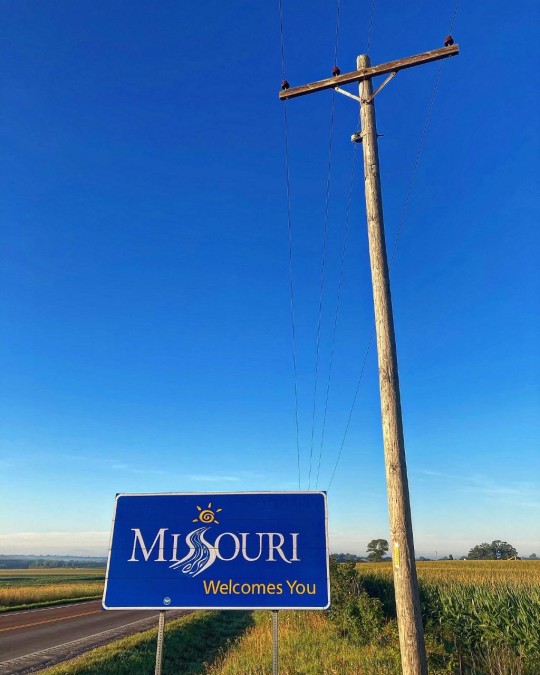


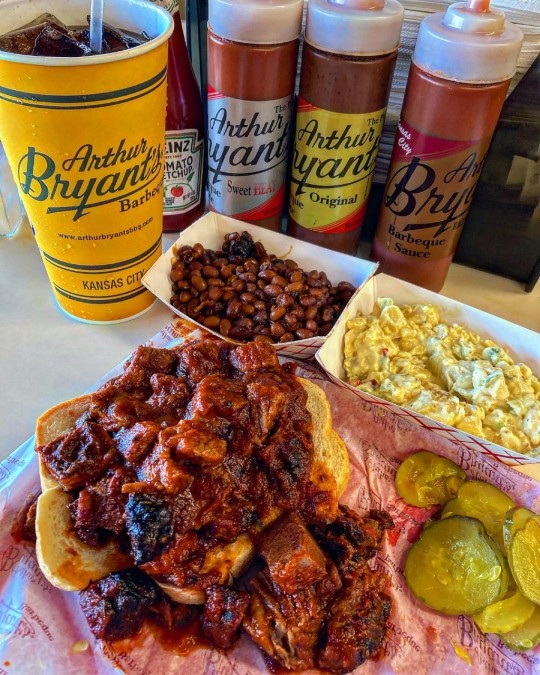
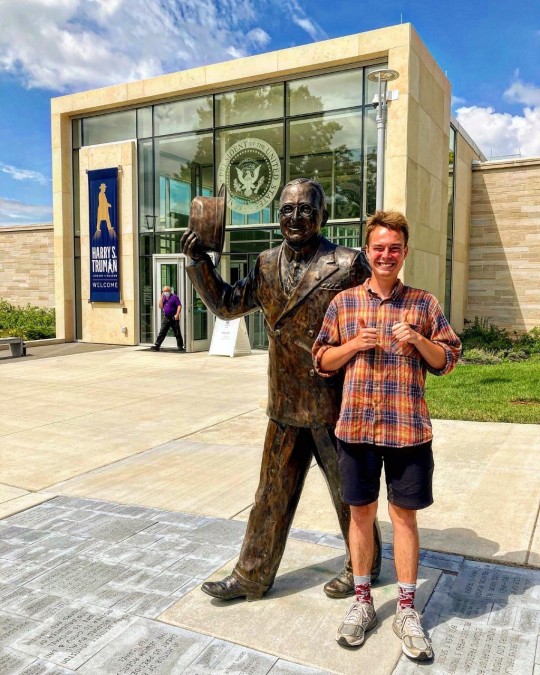
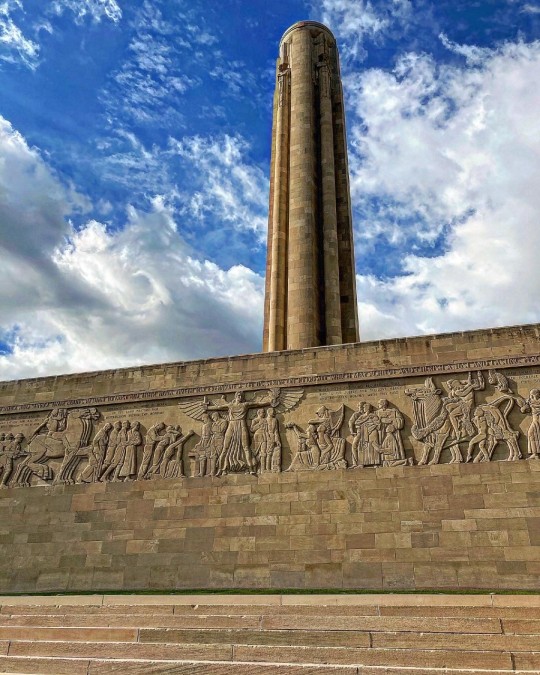


As part of my internship, the Museum of Danish America offers an intern car, which means that I can explore the wonders of the Midwest in the weekends – which I truly enjoy! This time I found myself in the Show-Me State, a neighbor to Iowa, where I currently live.
Considered a border state between the Midwest and the South, Missouri is full of history, natural wonders, different regions, and iconic cities.
Missouri was granted statehood in 1821, but the state’s past goes way back. Before European settlement, the area was a regional center of Native American Mississippian culture, and later the Osage and Missouria nations. My Missouri journey starts with St. Louis and continues west with a final destination in Kansas City – nearly following in the footsteps of the Lewis and Clark expedition.
Arriving from the Illinoisan highway, I could suddenly see the magnificent steel structure of the Gateway Arch appearing in the horizon, just like a mirage coming out of nowhere. Designed by renowned architect Eero Saarinen and completed in 1965, the Gateway Arch is today an icon of St. Louis. Nicknamed “The Gateway to the West,” St. Louis played a significant role in the westward expansion of the United States, which today is symbolized by the 630-foot-tall Gateway Arch. You can actually visit the museum underneath the building, and grab a really unique tram ride up to the top of the structure. Just in front of the Gateway Arch is the Old Courthouse, where Dred Scott, an enslaved person, first sued for his freedom in a case that would later be decided by the U.S. Supreme Court – but we’ll get back to Scott.
St. Louis was founded in 1764 by French fur traders who named it after Louis IX of France. The city came under American control with the Louisiana Purchase in 1803. Quickly, it emerged as the entrepôt of American expansion, mainly due to steam shipping on the adjacent Mississippi River and from the 1850s thanks to extensive railroad connections. North of St. Louis is also the place the where the mighty Mississippi, Missouri, and Illinois Rivers join together, forming what was once the major highways of the land before trains and cars came around.
St. Louisans take their food serious and the city offers a lot of unique cuisine. The most famous is perhaps St. Louis-style pizza, which features provel cheese, a very thin crust, and is often square cut. I tried one at Imo’s Pizza, which is a St. Louis-based chain, famous for their pizzas. Besides pizza, one may indulge in St. Louis-style barbecue, toasted raviolis, and grab a slinger for the midnight munchies. For dessert, the mouth-watering gooey butter cake, a St. Louis specialty since the 1930s, is my go-to, but be warned: One piece is never enough.
And if you need a drink after all this food, then here’s a funny fact: St. Louis may have been established by the French, but influencing it strongly was a very large German-descended population, which is was why the Anheuser-Busch was founded in the city.
As always, whenever I go to a new state, I plan to visit the state capitol building, so my next stop was Jefferson City, the capital of Missouri – named after Thomas Jefferson, who penned the Declaration of Independence in 1776, but also doubled the young nation with the Louisiana Purchase in 1803, which included present-day Missouri.
Actually, Jefferson continues to dominates the front of the classical revival-designed Missouri State Capitol, with a 13-foot-tall statue of man, the myth, and the legend himself. The building itself is filled with beautiful sculptures and murals reflecting the history of Missouri.
Missouri’s past is in many ways closely intervened with the American Civil War. In 1821, Missouri became the 24th state, as part of the 1820 Missouri Compromise, in which Missouri entered the Union as a slave state, while Maine was admitted as a slave-free state. Furthermore, the compromise prohibited slavery in those remaining Louisiana Purchase lands north of the 36°30′ parallel. This would become a political hot button over the next decades. At the time, Jefferson actually expressed concern that the line the compromise had drawn would tear the nation apart – a concern that would be shown later to be true.
In 1857, Missouri was once again in the nation’s spotlight with the controversial Dred Scott v. Sandford decision, which only deepened a divide so great, that it would eventually culminate in the American Civil War a few years later. Even though Missouri was a slave state, it officially fought on the Union side. However, being a Civil War border state, Missourians fought their own bloody guerrilla-style neighbor-against-neighbor war within the state's own frontiers with dual governments competing for control: In short, Missouri was torn apart.
Stepping aside from memories of the Civil War and avoiding this blog post being a history lesson, my next stop brings us to perhaps the most important Missourian of the 20th Century and a personal favorite of mine because of his role in establishing NATO and the Truman Doctrine: Mr. Missouri himself, Harry Truman. I visited his presidential library, which is among the finest I have ever been to, his home, and of course the historical town square, where everything has a Truman connection – all located in the great city of Independence. Truman took great pride in his city, and often called Kansas City a suburb of Independence, instead of the other way around, which I found quite amusing as I also take great pride in my home city of Roskilde, located close to Copenhagen.
No trip to Missouri is completed without a visit to the unofficial barbecue capital of the Midwest: Kansas City. While being literally located in opposite ends of the state, Kansas City feels drastically different from St. Louis. As a former hub for the cattle trade, and infamous for its political bosses, Kansas City today offers lot of fine examples of Art Deco buildings and great museums.
My favorite thing about the city is the impressive National World War I Museum and Memorial, a museum dedicated to a war, that impacted the world in so many ways and laid the foundations for World War II. After the Great War - as it was called by contemporaries, as people didn’t knew a notorious sequel would happen - ended, a group of Kansas City residents got together and worked delicately on erecting a national memorial for the brave Americans who lost their life in the muddy trenches and bloody battlefields of Europe.
The groundbreaking ceremony for the memorial happened on November 1, 1921 and was attended by 200,000 people, including Vice President Calvin Coolidge. Five years later, Liberty Memorial was finished. In 2004 the grounds became the nation's official war memorial and museum dedicated to World War I.
While the museum is worth a visit, I was mostly fascinated by the architecture, which is influenced by styles such as Beaux Arts Classicism and Egyptian Revival. The most iconic part is perhaps the eye-catching Liberty Tower and its sculptures. The grounds also offer the finest view of the Kansas City skyline and the beautiful Union Station. If you visit at night, the neon lights atop the skyscrapers is astonishing.
When one finds themselves in Kansas City, one must eat Kansas City-style barbecue. Henry Perry, who is considered the ‘Father of Kansas City barbecue,’ invented this barbecuing style. Actually, Perry was inducted into the American Royal Barbecue Hall of Fame in 2014.
I went to Arthur Bryant’s, which traces its past back to Perry. Charlie Bryant, who worked for Perry and took over the place when Perry died in 1940, sold it to his brother, Arthur Bryant, in 1946, and thus it became known as Arthur Bryant’s. Later, the business relocated. There is no Kansas City dish quite as iconic as burnt ends and Arthur Bryant's serves some of the best in town along with some tasty potato salad and brown beans.
My trip also included a visit to three small Missourian towns filled with impressive and charming buildings from a bygone age: First, Chillicothe, whose claim to fame is their invention of the sliced bread, coining the phrase ‘the best thing since sliced bread.’ Secondly, Hannibal, where Mark Twain grew up and where numerous sites associated with his fiction is located. And third, Marceline, known for being the boyhood home of Walt Disney. Disneyland’s Main Street, U.S.A, is a replica of the main street in Marceline. All quintessentially Midwestern small-towns and home to some top-notch murals, highlighting each town’s characteristics.
I enjoyed my time in Missouri, which sure has a lot to show and if I get the chance I would like to explore some of the southern parts of the state where the Ozarks, which you may know from the acclaimed Netflix series of the same name, is located.
Best from Anders Tornsø Jørgensen
0 notes
Text
State Ship Series: USS AMERICA

There have been four ships commissioned named after the United States of America in the US Navy.
USS AMERICA (1782)
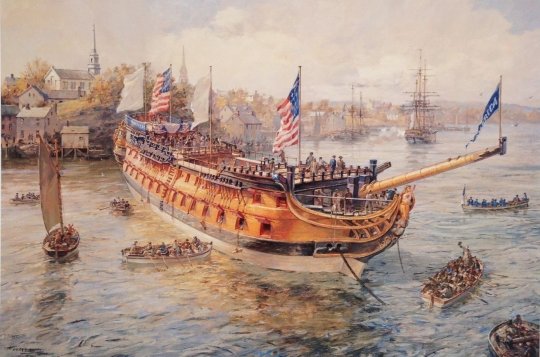
Type: 74-gun Ship of the Line
Laid down: May 1777
Christened/Launched: November 5, 1782
Fate: Scrapped due to dry rot, 1786
Built for the Continental Navy but given to France as a thank you for the support during the American Revolution and to replace their Ship of the Line, Magnifique, which was destroyed during the conflict.
USS AMERICA (IX-41)
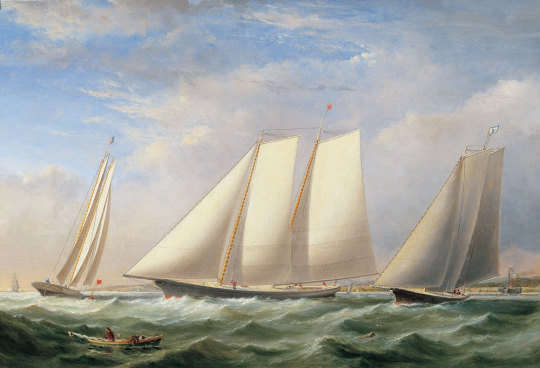

Type: racing yacht
Laid down: November 1850
Christened/Launched: May 3, 1851
Commissioned: 1862
Decommissioned: 1866
Recommissioned: 1923
Decommissioned: 1942
Fate: Scrapped, 1945
This ship had an interesting career. Originally named America. She built in 1951 for a member of the New York Yacht Club and won the the America's Cup international sailing trophy. Then owned by several different owners in Europe, one of which renamed her Camilla, and was brought back across the Atlantic in 1861. Then sold to the Confederate States of America and who used her renamed Memphis, as a blockade runner until they had to scuttle her 1862 when Union forces took Jacksonville, Florida. She was raised and repaired by the US Navy and renamed her USS America. She was used to blockade the CSA and after the war, was laid up until she was decommissioned and then sold in 1873. Refitted as a racing yacht for international racing. Then she changed hands several times until in 1921 she was sold to the America Restoration Fund, which donated her to the U.S. Naval Academy in Annapolis. The shed which housed America collapsed during a heavy snowstorm and destroyed in 1942. She was scrapped in 1945.
USS AMERICA (ID-3006)

Type: Troop Transport
Laid down: unknown
Launched: April 20, 1905
Completed: September 21, 1905
Acquired: July 25, 1917
Commissioned: August 6, 1917
Decommissioned: September 26, 1919
Fate: see below
Originally the Hamburg America Line SS Amerika, she was seized when the US entered World War I and converted from a passenger liner to a troop ship. Used by the US Army for transport duty as USAT America. Turned over to the United States Line in 1920. They operated her until 1930. Turned over the US Army again in 1940 and renamed USAT Edmund B. Alexander. She was used as troop ship until 1949. Sold for scrap in 1957.
USS AMERICA (CV-66)
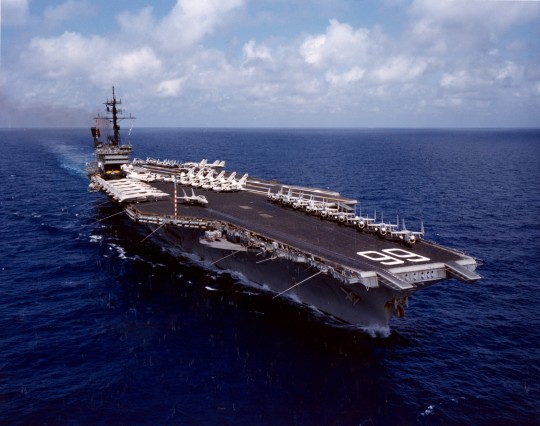
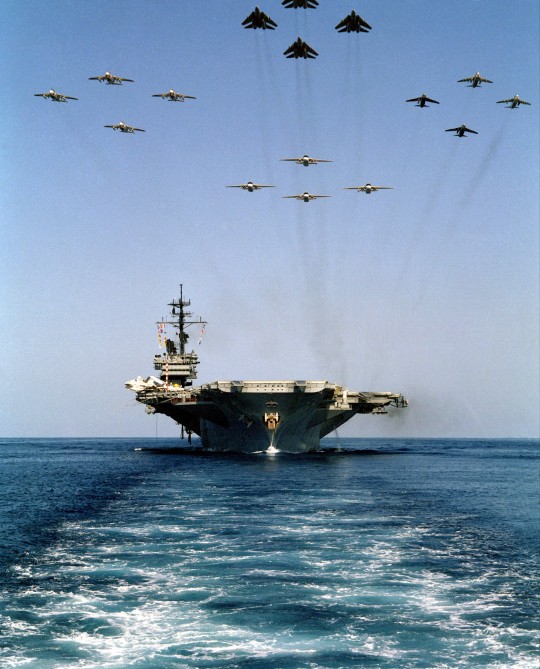
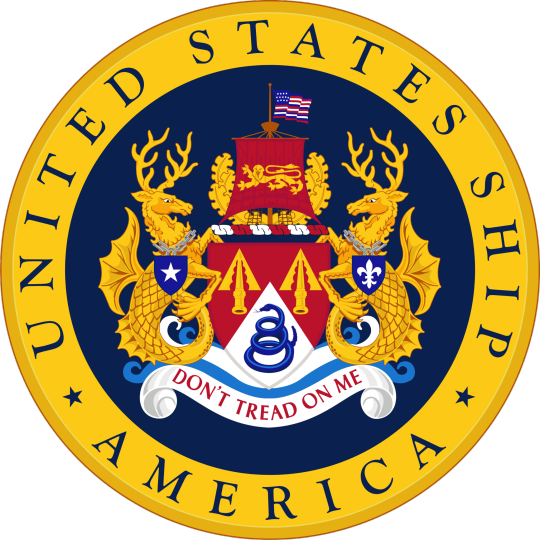
Class: Kitty Hawk Class
Type: Aircraft Carrier
Laid down: January 9, 1961
Launched/Christened: February 1, 1964
Commissioned: January 23, 1965
Decommissioned: August 9, 1996
Nickname: The Big "A"
Motto: Don't Tread on Me
Fate: Scuttled after live-fire testing, May 14, 2005
Originally planned to be the second Enterprise Class Nuclear Powered Aircraft Carrier, problems with the nuclear reactor caused her to be reordered as a Kitty Hawk Class. She made three tours during the Vietnam War, and was part of Desert Shield and Desert Storm. She was scuttle in 2005 after 4 weeks of live fire exercises.
USS AMERICA (LHA-6)

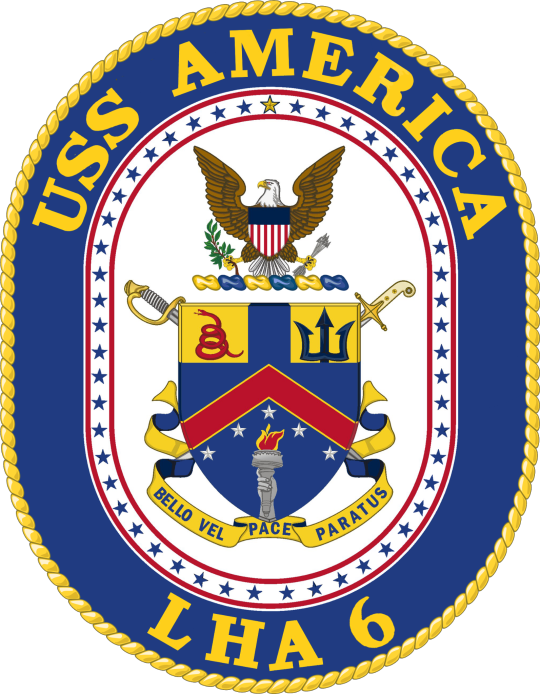
Class: America class
Type: Amphibious Assault Ship
Laid down: July 17, 2009
Launched: June 4, 2012
Christened: October 20, 2012
Commissioned: October 11, 2014
Motto: Bello vel pace paratus (Ready for War or Peace)
The Veterans of USS AMERICA (CV-66) lobbied for CVN-78 to be named America, but the Navy gave the named to the next class of amphibious assault ship instead.
source, source, source
U.S. Naval History and Heritage Command: NH 106683, NH 106552-KN
DN-SC-83-08192
#America#State Ship Series#USS America#USS America (1782)#74-gun ship of the line#ship of the line#USS America (IX-41)#Yacht#USS America (ID-3006)#Ocean liner#Liner#Troop ship#USS America (CV-66)#Kitty Hawk Class#Aircraft Carrier#USS America (LHA-6)#America Class#amphibious assault ship#united states navy#us navy#navy#usn#u.s. navy#my post#July
46 notes
·
View notes
Text
"The history books, which had almost completely ignored the contribution of the Negro in American history, only served to intensify the Negroes' sense of worthlessness and to augment the anachronistic doctrine of white supremacy. All too many Negroes and whites are unaware of the fact that the first American to shed blood in the revolution which freed this country from British oppression was a black seaman named Crispus Attucks. Negroes and whites are almost totally oblivious of the fact that it was a Negro physician, Dr. Daniel Hale Williams, who performed the first successful operation on the heart in America. Another Negro physician, Dr. Charles Drew, was largely responsible for developing the method of separating blood plasma and storing it on a large scale, a process that saved thousands of lives in World War II and has made possible many of the important advances in postwar medicine. History books have virtually overlooked the many Negro scientists and inventors who have enriched American life. Although a few refer to George Washington Carver, whose research in agricultural products helped to revive the economy of the South when the throne of King Cotton began to totter, they ignore the contribution of Norbert Rillieuz, whose invention of an evaporating pan revolutionized the process of sugar refining. How many people know that multimillion-dollar United Shoe Machinery Company developed from the shoe-lasting machine invented in the last century by a Negro from Dutch Guiana, Jan Matzelinger; or that Granville T. Woods, an expert in electric motors, whose many patents speeded the growth and improvement of the railroads at the beginning of this century, was a Negro?
Even the Negroes' contribution to the music of America is sometimes overlooked in astonishing ways. In 1965 my oldest son and daughter entered an integrated school in Atlanta. A few months later my wife and I were invited to attend a program entitled "Music that has made America great." As the evening unfolded, we listened to the folk songs and melodies of the various immigrant groups. We were certain that the program would end with the most original of all American music, the Negro spiritual. But we were mistaken. Instead, all the students, including our children, ended the program by singing "Dixie"."
- Martin Luther King Jr., as quoted in Carson, Clayborne. 2001. The Autobiography of Martin Luther King, Jr., Grand Central Publishing. Cap: Black Power.
37 notes
·
View notes
Text
Updated Reading List 6.5: American Jewish History
Historiography, Theory, Methodology, Construction, and Philosophy of History
American History
Ancient History
Atlantic World History
European History
Ancient Jewish History
Medieval Jewish History
Sephardic and Mizrahi Jewish History
Modern European Jewish History
American Jewish History (ie my day job)
The Jews of the United States, 1654 to 2000 by Hasia R. Diner
Judah P. Benjamin: The Jewish Confederate by Eli Evans
The Jewish People in America series, edited by Henry Feingold [NOTE: These books are quick, easy, and dense. They’re not the most exciting, but they’re, imo, the best way to give yourself a crash-course in American Jewish History]
A Time for Planting: The First Migration, 1654-1820 (Volume 1) by Eli Faber
A Time for Gathering: The Second Migration, 1820-1880 (Volume 2) by Hasia Diner
A Time for Building: The Third Migration, 1880-1920 (Volume 3) by Gerald Sorin
A Time for Searching: Entering the Mainstream, 1920-1945 (Volume 4) by Henry L. Feingold
A Time for Healing: American Jewry since World War II (Volume 5) by Edward S. Shapiro
Daughters of the Shtetl: Life and Labor in the Immigrant Generation by Susan Glenn
World of Our Fathers: The Journey of the East European Jews to America and the Life They Found and Made by Irving Howe [NOTE: Historiographically, this book is classic and foundational in the field of American Jewish History. As a history book, it’s quite outdated.]
Common Sense and a Little Fire: Women and Working-Class Politics in the United States, 1900-1965 (Gender and American Culture) by Annelise Orleck [NOTE: I stated in an earlier section that everything Orleck writes is gold and honestly THIS BOOK IS SO GOOD I READ IT LIKE A NOVEL. Also Clara Lemlich, one of the first Fierce Historical Ladies I wrote about is in here; I’m p. sure she’s also in Susan Glenn’s book, listed above.]
The Soviet Jewish Americans (Brandeis Series in American Jewish History, Culture, and Life) by Annelise Orleck
American Judaism: A History by Jonathan Sarna
NOTE: I’m an Amazon Affiliate; I will receive a small portion of the proceeds from ANYTHING [hint] you purchase on Amazon via my links. I am an independent scholar, and need $$$ to pay my translators etc for my book on Jewish women’s Holocaust resistance, so anything you can do helps! If you’d rather not give your $$$ to Amazon but still want to help this independent scholar out, my paypal is here.
106 notes
·
View notes
Text
Events 9.17 (after 1930)
1930 – The Kurdish Ararat rebellion is suppressed by the Turks.
1932 – A speech by Laureano Gómez leads to the escalation of the Leticia Incident.
1935 – The Niagara Gorge Railroad ceases operations after a rockslide.
1939 – World War II: The Soviet invasion of Poland begins.
1939 – World War II: German submarine U-29 sinks the British aircraft carrier HMS Courageous.
1940 – World War II: Due to setbacks in the Battle of Britain and approaching autumn weather, Hitler postpones Operation Sea Lion.
1941 – World War II: A decree of the Soviet State Committee of Defense restores compulsory military training.
1941 – World War II: Soviet forces enter Tehran during the Anglo-Soviet invasion of Iran.
1944 – World War II: Allied airborne troops parachute into the Netherlands as the "Market" half of Operation Market Garden.
1944 – World War II: Soviet troops launch the Tallinn Offensive against Germany and pro-independence Estonian units.
1944 – World War II: German forces are attacked by the Allies in the Battle of San Marino.
1948 – The Lehi (also known as the Stern gang) assassinates Count Folke Bernadotte, who was appointed by the United Nations to mediate between the Arab nations and Israel.
1948 – The Nizam of Hyderabad surrenders his sovereignty over the Hyderabad State and joins the Indian Union.
1949 – The Canadian steamship SS Noronic burns in Toronto Harbour with the loss of over 118 lives.
1961 – The world's first retractable roof stadium, the Civic Arena, opens in Pittsburgh, Pennsylvania.
1961 – Northwest Orient Airlines Flight 706 crashes during takeoff from O'Hare International Airport in Chicago, Illinois, killing all 37 people on board.
1965 – The Battle of Chawinda is fought between Pakistan and India.
1974 – Bangladesh, Grenada and Guinea-Bissau join the United Nations.
1976 – The Space Shuttle Enterprise is unveiled by NASA.
1978 – The Camp David Accords are signed by Israel and Egypt.
1980 – After weeks of strikes at the Lenin Shipyard in Gdańsk, Poland, the nationwide independent trade union Solidarity is established.
1980 – Former Nicaraguan President Anastasio Somoza Debayle is killed in Asunción, Paraguay.
1983 – Vanessa Williams becomes the first black Miss America.
1991 – Estonia, North Korea, South Korea, Latvia, Lithuania, the Marshall Islands and Micronesia join the United Nations.
1991 – The first version of the Linux kernel (0.01) is released to the Internet.
1992 – An Iranian Kurdish leader and his two joiners are assassinated by political militants in Berlin.
2001 – The New York Stock Exchange reopens for trading after the September 11 attacks, the longest closure since the Great Depression.
2006 – Fourpeaked Mountain in Alaska erupts, marking the first eruption for the volcano in at least 10,000 years.
2006 – An audio tape of a private speech by Hungarian Prime Minister Ferenc Gyurcsány is leaked to the public, in which he confessed that his Hungarian Socialist Party had lied to win the 2006 election, sparking widespread protests across the country.
2011 – Occupy Wall Street movement begins in Zuccotti Park, New York City.
2013 – Grand Theft Auto V earns more than half a billion dollars on its first day of release.
2016 – Two bombs explode in Seaside Park, New Jersey, and Manhattan. Thirty-one people are injured in the Manhattan bombing.
2018 – A Russian reconnaissance aircraft carrying 15 people on board is brought down by a Syrian surface-to-air missile over the Mediterranean Sea.
0 notes
Link
Visitors to the McKeesport Regional History and Heritage Center are encouraged upon arrival to enter a corridor and enjoy a ‘walk through time.’ The corridor, lined with outlandish fashions and records taped to the walls, features exhibits on McKeesport’s former department stores, its now shuttered daily newspaper, and a former landmark hotel. Perhaps atypically for a former steel town, the images featured focus not on smokestacks or furnaces, but on McKeesport’s former central business district, and the pleasant Boomer memories of post-Second World War prosperity.
McKeesport today bears little resemblance to the city commemorated in its history museum. It’s no longer the nation’s leading producer of steel pipes, nor the commercial and industrial center of the Mon Valley Region, but rather a small suburban community on Pittsburgh’s periphery. The city’s poverty rate is more than double the state and Pittsburgh metro levels, at more than thirty-one percent, with forty-nine percent of children under the age of eighteen living in poverty. Its median home value, $48,000, is a quarter of the state’s and a third of the rest of the Pittsburgh metro. Twenty percent of housing units are vacant, and half the population moved between 2000 and 2014. In 2019, a national trade association for the home security industry ranked McKeesport America’s fourth-most dangerous city.
The story of what happened to McKeesport, like so many places in the Rust Belt, is a story of the relationships between labor and industry, of the collective power of communities to shape their circumstances, and of the forces that conspire to keep this power at bay. Its history is shaped by two ‘Great Depressions’—first, the one everybody knows about, in the 1930s, and again in the 1970s and 80s, when the oil crisis led to a downturn in steel production and a tremendous loss of jobs and industry (cumulative job losses since the mid-1970s are estimated at 175,000).
The Mon Valley and the community of McKeesport never recovered from that second crisis. This contrasts sharply with the first, when organized labor succeeded, albeit briefly, in securing for steel industry workers the wages, benefits, and job security that had so long been denied them by U.S. Steel and its local political allies. That hard-won prosperity and security would ultimately last only two decades before a combination of factors conspired to undermine and overwhelm what was once the beating heart of the American steel industry—but it carries important lessons for those who hope to rebuild thriving communities in the Rust Belt.
Well into the third decade of the twentieth century, working conditions in the large industrial concerns that defined the McKeesport community bordered on intolerable. Most workers toiled for excessively long hours in dangerous conditions for pitiful wages. Discipline in the mills could be enforced with beatings or firing without cause. Complaints could result in losing one’s job, as could sickness or even an injury incurred while at work; in 1910, in more than half of the workplace accidents resulting in injury or death in Pittsburgh, the employer bore absolutely no responsibility whatsoever. There was no recourse outside of organizing, and even that brought with it serious challenges. In Pittsburgh specifically, union organizers were harassed and beaten by Pinkerton detectives working for the major steel companies, and meeting halls were closed by the Board of Health for unsanitary conditions. (Duquesne mayor James Crawford famously boasted that Jesus Christ himself couldn’t hold a union meeting in his town.)
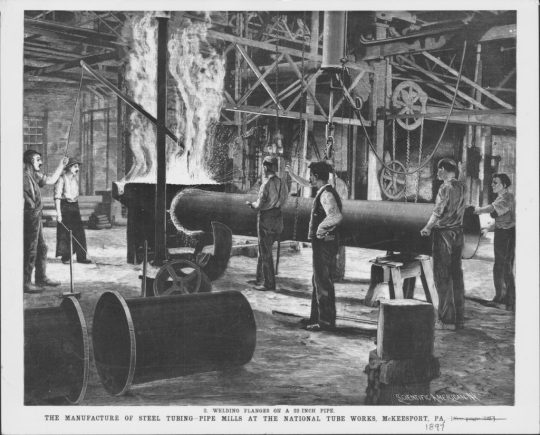
Engraving of the manufacture of steel tubing pipe mills at the National Tube Works, as printed in Scientific America, McKeesport, PA, 1897. American Stock Archive/Archive Photos/Getty Images.
Though the American steel worker had secured a modicum of job security and a reprieve from this brutal exploitation during the First World War, at the war’s conclusion the steel industry sought its own ‘return to normalcy’ and an elimination of all the benefits that had been gained to keep the industry running. The Great Steel Strike of 1919 demonstrated that there was considerable labor unrest in the immediate aftermath of the First World War.
McKeesport was at the center of considerable labor organizing during the 1920s and 1930s. This was the era of the Red Scare, and anti-union sentiment was widespread. Phil McGuigan, a McKeesport worker, recalled that private detectives spied on employees to prevent unionizing. McGuigan also remembered an informal system of patronage was the primary means for gaining employment, and that Mayor George Lysle forbade the renting of halls for union meeting purposes. In 1923, several members of the Workers’ Party were fined for holding an outdoor meeting on private property after being denied the right to rent a hall for the same purpose. After the meeting, McKeesport’s major employers went about dismissing “…all employees who were known to have attended the meeting or to have been identified in any way with it or the Workers’ Party.”
McKeesport resident Junious Brown, interviewed in 1983 by the McKeesport Oral History Project, recalled that the steel mills of the Mon Valley largely fell silent during the Great Depression, noting that McKeesport’s primary employer, National Tube, ceased operation during the Great Depression, as did the nearby Duquesne Works. Nearly all the locals interviewed for the said that jobs, food, and money were all in short supply, but that most people didn’t leave their homes or the community unless they were forced out. Those interviewed, Brown included, spoke in glowing terms about the union movement, which helped the citizens of the Mon Valley weather the storm of widespread economic collapse.
Labor organizers, including communists, were known for taking direct action to help people in trouble. Rocky Doratio, who was active with the Unemployment Council (UC) movement prevalent in the Mon Valley at the time, said when peoples’ utilities were shut off, UC members would “go around turning the gas on; water and electric too,” and that UC’s membership would show up in force in case one of their members were threatened with eviction. Similar tactics were employed to ensure the prompt distribution of welfare checks. (Joseph Odorcich, who became vice president of the Steelworkers’ Union in the 1980s, told interviewers: “I said in the ‘30s we were that close to going communist. One of the reasons was, in those days they were the only ones who would help you. If the company shut off the gas, the commies come in at night and turned it back on.”)
Several of the interviewees related how social solidarity during the Great Depression knocked down interracial and inter-ethnic barriers that had been previously exploited by major employers and the political class alike. Junious Brown recalled that the unions improved his job prospects, such that he and other Black people were no longer limited to “…the hardest, dirtiest jobs.” Andrew Jakomas, who served three terms as mayor of McKeesport from 1953 to 1965, recalled McKeesport during the Depression was a multi-ethnic melting pot, but that politically the city was a “closed corporation” where “ethnics and Blacks” had no chance of holding political office. Jakomas summarized the general support of citizens for the various federal government ‘make-work’ initiatives of the New Deal, stating that “…we all became Democrats with Roosevelt.”
As McKeesport native and veteran labor reporter John P. Hoerr relates, the ‘good old days’ of working in the steel mills was in the post-World War II period, when organized labor had secured a good deal for the working man. The postwar period witnessed considerable labor action on the part of the United Steelworkers (USW), which contrasts sharply with the stereotypical image of postwar domestic tranquility and social conservatism. In fact, in the fifteen years that followed the Second World War the USW went on strike five times (in 1946, 1949, 1952, 1956 and 1959), the last of which involved more than half a million workers and lasted 116 days.
The steel industry employed about eighty thousand people in the late 1940s, with most of the jobs concentrated in the Mon Valley. While the majority of principle employers were involved in steel (and U.S. Steel was without question the dominant employer in and around McKeesport), the city had a sufficiently diversified economy that it had emerged into a regional center and not merely a mill town. Despite this economic diversity, and despite increased labor activism that led to the formation of the United Steelworkers, U.S. Steel remained both locally and nationally dominant, such that major changes to the industry were bound to have a serious and negative ‘trickle down’ effect on mill-dependent communities and the various industries involved in steel.
In 1947, the Taft-Hartley Act, one of the most sweeping pieces of anti-union legislation in U.S. history, was passed over the veto of Harry Truman. Among the act’s various provisions was the right for states to pass ‘right to work’ legislation, which outlawed “closed shop” union organizing and allowed non-union workers to hire in—a major blow for union power, and perhaps the singular aspect that secured bipartisan support from the ‘Dixiecrats’ and curtailed union organizing in the South.
By the middle of the century, as the economic foundation of the Mon Valley was being hollowed out, so too was its urban environment. Whole sections of the city, including much of its antique affordable housing stock, was razed to make way for large-scale urban renewal projects that never materialized, and the land was ultimately handed over to the steel firms. Population displacement was motivated first by a desire to ‘clean up the slums’ and ‘reduce crime,’ but ultimately served to provide inexpensive land to massive corporations. While communities across the country wiped the slate clean of urban neighborhoods, they were simultaneously losing residents and their tax bases to new suburbs.
The racial characteristics of McKeesport were also changing, with the Black population representing about twenty-one percent of the total by 1971 (it’s about thirty-six percent today). After the city desegregated public housing in April of 1971, white people began distributing thousands of crude racist pamphlets. Anti-Black racism in McKeesport and the Mon Valley Region was not limited to the distribution of pamphlets or lethargy in the integration of public housing, however; Black people generally had few options for employment and fewer still for advancement, and were first to be laid off from the mills.
By the time of the second oil crisis, in 1979, a global recession was brewing and analysts started warning of the possibility of an oil glut. By 1981, the American economy was in full recession, and demand for American steel, like McKeesport’s tubes and pipes, was plummeting. The company laid off more than six thousand workers in the Mon Valley by November of that year. The following month, it used $6.3 billion in federal aid to purchase Marathon Oil as part of an economic diversification strategy meant to satisfy the interests of shareholders; steelworkers complained the funds should have been used to upgrade mills to make steel products more internationally competitive.
More than five hundred companies declared bankruptcy in America during one week in June 1982, with more than fifty thousand businesses failing across the county in that fiscal year. Unemployment in the Pittsburgh Metropolitan Area reached nearly sixteen percent in 1983, with 168,000 people seeking work. Though the rate declined to under eight percent by the end of 1986, in mill towns the numbers often exceeded twenty percent in terms of real unemployment. Research from the University of Pittsburgh’s School of Social Work revealed that between 1981 and 1986, in one out of three Mon Valley households, at least one member had been jobless for a year or more.

McKeesport, Pennsylvania. Photo via Flickr (creative commons).
In October of 1986, twenty-two thousand USW members walked off the job as negotiations broke down; the strike would last six months. When the strike ended in February of 1987, the 189 remaining employees who reported back to work at McKeesport’s National Tube Works were told their plant, in operation continuously since the 1870s, would not re-open. Twenty-one employees were retained to conclude the last shipments and assist in stripping the plant of its remaining useful technology and equipment. (U.S. Steel would transfer its tube and pipe operations to Fairfield, Alabama, where union organizing was more difficult.)
By 1986, population loss had left five hundred abandoned homes throughout McKeesport and over half a million dollars lost in tax income. Young people had been moving out in droves for some time; seventy-four percent of the 1986 graduating class of Duquesne High reported they would leave the Mon Valley for better opportunities elsewhere. Public services, from police and firefighters to street cleaners and public works employees, were cut in communities large and small throughout the region. Though McKeesport would experience a brief resurgence of activism in an effort to save the community in the mid-late 1980s, their efforts were largely unsuccessful. With the loss of the economic foundation of the region, those who could afford to move elsewhere did so, and the population of McKeesport continued to shrink and grow older.
It’s hard to be hopeful walking past the endless rows of abandoned storefronts and the crumbling buildings of McKeesport’s once bustling downtown, and yet, a century ago, at a time in which nearly all hope had been lost, the people of this city secured for themselves a new and better deal. Though McKeesport transitioned from a bustling regional commercial and industrial center to a declining residential suburb over the course of the last century, there may yet be a stable foundation for renewal.
The community that remains occupies land once reserved for the local elites, stretched along Eden Park Boulevard and focused on the few remaining community institutions, such as the local high school, Renziehausen Park, and the churches that proudly boast of their ethnic heritage—Polish, Ukrainian, Hungarian. Down the hill, toward what was once McKeesport’s central business district, is an abundance of open lots and derelict buildings. Racial divisions seem to remain, with the upper part of the community noticeably whiter and better off than the segment that lives down the hill; McKeesport’s Black population has increased substantially over the past decade, like the other communities of the Mon Valley, as Black people are displaced from Pittsburgh’s gentrifying urban neighborhoods.
In the Mon Valley, the organization of municipalities still reflects the preferences of U.S. Steel from more than a century ago. Communities remain disconnected from one another, despite geographic proximity and near socio-economic uniformity; McKeesport is only about twelve miles from downtown Pittsburgh, but the drive can take as long as forty-five minutes. This planning was often deliberate, as major industrial concerns like U.S. Steel simply didn’t want their employees mixing with the employees of other mills for fear they may unionize.
Politicians often say there are no simple solutions for what to do with America’s devastated industrial cities, but the beleaguered citizens of these communities are under no illusion that easy solutions exist. Despite baked-in divisions, the workers of the 1930s found common cause, and learned, as did working people across the country, that the power of the industrial bosses was largely an illusion. It was easy to stop evictions when masses of people showed up to stare down the sheriff, and relatively simple to turn the utilities back on with the help of the neighborhood electrician or plumber. The likelihood of police violence and suppression fell with every new person attending an outdoor rally right in the middle of town. Churches and schools, street corners and shops became the venues for impromptu meetings, discreet sharing of information, and the ever-increasing organizing web.
Residents of today can take a powerful lesson from McKeesport’s first Great Depression. The strength of the town in the twentieth century was built on an infrastructure of connection and organizing across differences—geographic and otherwise—and offers a compelling blueprint for rebuilding strong Rust Belt communities in the future. The steel mills may not be coming back to the valley, but that’s no matter–they weren’t really what brought these communities together in the first place. ■
The author, Taylor C. Noakes, is an independent journalist and public historian currently based in Pittsburgh. He is a graduate of Duquesne University’s MA Public History program and is currently working on preservation and rehabilitation projects for a Pittsburgh-based architectural firm.
***
Belt Magazine is a 501(c)(3) nonprofit organization. To support more independent writing and journalism made by and for the Rust Belt and greater Midwest, make a donation to Belt Magazine, or become a member starting at just $5 a month.
17 notes
·
View notes
Text
This Holocaust Rememberance Day, I want to tell you about my great-great-uncle Adolph.
Adolph was born in 1895 in Hungary. He was the youngest of five brothers, with my great Grandfather in the middle.
I don’t know a lot about his early life, but I know that some time between 1914 and 1918 he lost a leg fighting in World War One. We have it in family lore that this happened while he was “saving a gentile”.
Because he had only one leg, Adolph was the only one of his brothers who could not flee Hungary during World War Two. Nowhere would take disabled people in. Everyone else went to America, but America would not take a one-legged man. So Adolph stayed, with his wife (Ezri) and two teenaged kids. His mother also stayed, alone, as his father had died in the 1920s.
One night in 1943, Adolph’s mother, Leni, disappeared. We believe she was taken by the Nazis, but I do not have difinitive proof available to me. That same night, a man came to the door of Adolph’s home.
“The Nazis have your mother,” he said. “In the morning they are coming for you. Come with me.”
That man was the aforementioned gentile for whom Adolph lost his leg. He took Adolph and Ezri to his home and hid them there. Their children went underground, separately. They knew there was a good chance they’d all die.
Meanwhile, in America, no one knew where Adolph and his family were. They assumed the worst. There was no news for years.
And then, in 1945, when my grandfather was 20 years old, the phone in his father’s home rang. His father answered, and began to weep. Adolph, Ezri, and both of their children has made it to Israel.
Adolph died in 1965, at the age of 70. He was a grandfather.
But he very well could have died in 1943, because immigration laws did not allow for disabled people to enter safe places.
So today I’m thinking about Adolph, and all the other people who were forced to face death because of ableist laws. הי״ד
2K notes
·
View notes